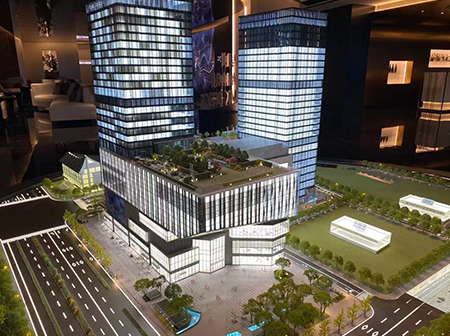
How to Reduce Production Time for Mechanical Equipment Models with 3D Printing
Introduction
The manufacturing industry has undergone significant transformations with the advent of 3D printing (additive manufacturing). One of the most impactful applications of this technology is in the production of mechanical equipment models, where it offers substantial time savings compared to traditional methods like CNC machining or injection molding. Reducing production time is crucial for accelerating product development, improving efficiency, and cutting costs.
This article explores various strategies to minimize production time for mechanical equipment models using 3D printing. Key focus areas include optimizing design, selecting the right materials and printing technologies, improving post-processing efficiency, and leveraging automation.
1. Optimizing Design for Faster 3D Printing
1.1 Lightweight and Hollow Structures
One of the most effective ways to reduce printing time is by designing lightweight models with hollow or lattice structures. Since 3D printing builds objects layer by layer, reducing material volume directly decreases print time.
- Use Generative Design Software: Tools like Autodesk Fusion 360 or nTopology can automatically generate optimized structures that maintain strength while minimizing material usage.
- Incorporate Internal Lattices: Instead of solid infill, use gyroid or honeycomb patterns to reduce weight and printing time without compromising structural integrity.
1.2 Minimizing Support Structures
Support structures are often necessary for overhangs but increase printing time and material waste.
- Self-Supporting Angles: Design parts with angles below 45 degrees to reduce the need for supports.
- Split Complex Models: Printing in multiple parts that are later assembled can eliminate unnecessary supports.
- Use Dissolvable Supports: If available, soluble support materials (e.g., PVA in FDM or Breakaway in SLA) can speed up post-processing.
1.3 Reducing Layer Height and Wall Thickness
While finer layers improve surface quality, they also increase print time.
- Balance Resolution and Speed: Use thicker layers (0.2mm or higher) for non-critical areas and finer layers only where necessary.
- Optimize Wall Thickness: Ensure walls are just thick enough for structural needs to avoid unnecessary printing time.
2. Choosing the Right 3D Printing Technology
Different 3D printing technologies offer varying speeds and capabilities. Selecting the best one for mechanical models is crucial.
2.1 Fused Deposition Modeling (FDM)
- Pros: Low cost, good for large parts, wide material selection.
- Cons: Slower than other methods, lower resolution.
- Speed Optimization: Use a larger nozzle (0.6mm or 0.8mm) to extrude more material per pass.
2.2 Stereolithography (SLA) / Digital Light Processing (DLP)
- Pros: High resolution, smooth surface finish, faster than FDM for small parts.
- Cons: Limited build size, post-curing required.
- Speed Optimization: DLP is faster than SLA because it cures entire layers at once.
2.3 Selective Laser Sintering (SLS)
- Pros: No supports needed, strong functional parts, good for complex geometries.
- Cons: Higher cost, powder handling required.
- Speed Optimization: Ideal for batch production since multiple parts can be nested in the build chamber.
2.4 Binder Jetting & Material Jetting
- Pros: Extremely fast for small, high-detail parts.
- Cons: Limited material options, lower strength.
3. Material Selection for Faster Printing
Some materials print faster than others due to their curing or melting properties.
- Fast-Curing Resins (SLA/DLP): Standard resins cure faster than tough or flexible variants.
- High-Flow Thermoplastics (FDM): PLA prints faster than ABS or PETG due to lower warping risk.
- Metal Powders (SLM/DMLS): Optimized metal alloys can reduce laser sintering time.
4. Printer Calibration and Optimization
4.1 Increasing Print Speed Without Sacrificing Quality
- Adjust Print Speed Settings: Higher speeds (80-120mm/s for FDM) can be used for infill and internal structures.
- Optimize Acceleration and Jerk Settings: Smoother motion reduces vibration and allows faster printing.
4.2 Using Multiple Extruders (FDM)
- Dual Extrusion: Print support structures in a secondary material (e.g., PVA) to reduce post-processing time.
4.3 Batch Printing
- Nesting Multiple Parts: Print several small models simultaneously to maximize build plate utilization.
5. Post-Processing Efficiency
Post-processing can be a bottleneck. Strategies to reduce time include:
- Automated Support Removal: Use dissolvable supports or mechanical tumbling for faster cleanup.
- Minimal Sanding/Finishing: Design parts to require less manual finishing (e.g., textured surfaces hide layer lines).
- UV Curing Optimization (SLA/DLP): Use high-intensity UV chambers to reduce curing time.
6. Automation and Workflow Integration
- Automated File Preparation: Use AI-driven slicing software to optimize print settings automatically.
- Cloud-Based Printing: Remote monitoring and queuing reduce downtime between jobs.
- Robotic Part Handling: Automated part removal and post-processing can streamline production.
7. Case Studies and Best Practices
- Automotive Prototyping: Companies have reduced prototype lead times from weeks to days by switching to high-speed SLS printing.
- Aerospace Components: Lightweight lattice structures in metal 3D printing cut production time by 40%.
Conclusion
Reducing production time for mechanical equipment models with 3D printing requires a multi-faceted approach, including design optimization, technology selection, material choices, and workflow automation. By implementing these strategies, manufacturers can achieve faster turnaround times, lower costs, and greater efficiency in product development.
As 3D printing technology continues to evolve, further advancements in speed, materials, and automation will unlock even greater time-saving potential for mechanical modeling.
---
This article provides a comprehensive guide on reducing production time with 3D printing while avoiding any company-specific references. Let me know if you'd like any modifications!
This website uses cookies to ensure you get the best experience on our website.
Comment
(0)